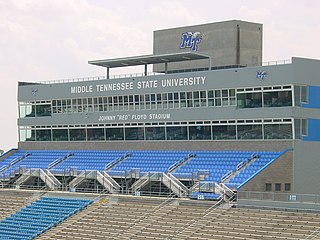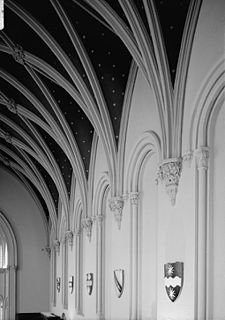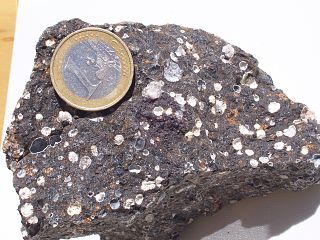Woolen or woollen is a type of yarn made from carded wool. Woolen yarn is soft, light, stretchy, and full of air. It is thus a good insulator, and makes a good knitting yarn. Woolen yarn is in contrast to worsted yarn, in which the fibers are combed to lie parallel rather than carded, producing a hard, strong yarn.

Timber framing and "post-and-beam" construction are traditional methods of building with heavy timbers, creating structures using squared-off and carefully fitted and joined timbers with joints secured by large wooden pegs. It is commonplace in wooden buildings from the 19th century and earlier. If the structural frame of load-bearing timber is left exposed on the exterior of the building it may be referred to as half-timbered, and in many cases the infill between timbers will be used for decorative effect. The country most known for this kind of architecture is Germany. Timber framed houses are spread all over the country except in the southeast.
Prefabrication is the practice of assembling components of a structure in a factory or other manufacturing site, and transporting complete assemblies or sub-assemblies to the construction site where the structure is to be located. The term is used to distinguish this process from the more conventional construction practice of transporting the basic materials to the construction site where all assembly is carried out.

Brick nog, is a construction technique in which bricks are used to fill the vacancies in a wooden frame. The walls then may be covered with tile, weatherboards or rendered. Generally the term brick infill is used instead of nogging in half-timbered construction.

Johnny "Red" Floyd Stadium is a stadium in Murfreesboro, Tennessee, United States. It is primarily used for American football, and is the home field of the Middle Tennessee State University Blue Raiders. It also serves as the stadium for the Tennessee Secondary School Athletic Association's (TSSAA) State High School Football Championships. It previously served as the home stadium for Riverdale and Oakland high schools, for a long period when those schools did not have stadiums. It later was the home stadium for Siegel High School for a short period, when construction for a stadium was delayed. The stadium is named for Middle Tennessee State University football coach Johnny Floyd.

Stone walls are a kind of masonry construction that has been used for thousands of years. The first stone walls were constructed by farmers and primitive people by piling loose field stones into a dry stone wall. Later, mortar and plaster were used, especially in the construction of city walls, castles, and other fortifications before and during the Middle Ages. These stone walls are spread throughout the world in different forms. One of the best example is the Cyclopean Wall in Rajgir, India.
Reverse Standards Conversion or RSC is a process developed by a team led by James Insell at the BBC for the restoration of video recordings which have already been converted between different video standards using early conversion techniques.

The Baptist Health Training Facility at Nova Southeastern University, formerly the Miami Dolphins Training Facility, is located on the Nova Southeastern University main campus in Davie, Florida. It is the headquarters location for the Miami Dolphins, as well as a location for frequent special events.

A blind arch is an arch found in the wall of a building that has been infilled with solid construction and so cannot serve as a passageway, door or window. The term is most often associated with masonry wall construction, but blind arches are also found in other types of construction such as light frame construction. Some blind arches were originally built as open arches and infilled later. Others were originally built with solid infill as intentional stylistic elements.

Crushed stone or angular rock is a form of construction aggregate, typically produced by mining a suitable rock deposit and breaking the removed rock down to the desired size using crushers. It is distinct from gravel which is produced by natural processes of weathering and erosion, and typically has a more rounded shape.

Cross-laminated timber (CLT) is a wood panel product made from gluing layers of solid-sawn lumber together. Each layer of boards is oriented perpendicular to adjacent layers and glued on the wide faces of each board, usually in a symmetric way so that the outer layers have the same orientation. An odd number of layers is most common, but there are configurations with even numbers as well. Regular timber is an anisotropic material, meaning that the physical properties change depending on the direction at which the force is applied. By gluing layers of wood at perpendicular angles, the panel is able to achieve better structural rigidity in both directions. It is similar to plywood but with distinctively thicker laminations.

Cellular confinement systems (CCS)—also known as geocells—are widely used in construction for erosion control, soil stabilization on flat ground and steep slopes, channel protection, and structural reinforcement for load support and earth retention. Typical cellular confinement systems are geosynthetics made with ultrasonically welded high-density polyethylene (HDPE) strips or novel polymeric alloy (NPA)—and expanded on-site to form a honeycomb-like structure—and filled with sand, soil, rock, gravel or concrete.

Wattle and daub is a composite building material used for making walls, in which a woven lattice of wooden strips called wattle is daubed with a sticky material usually made of some combination of wet soil, clay, sand, animal dung and straw. Wattle and daub has been used for at least 6,000 years and is still an important construction material in many parts of the world. Many historic buildings include wattle and daub construction, and the technique is becoming popular again in more developed areas as a low-impact sustainable building technique.
Land recycling is the reuse of abandoned, vacant, or underused properties for redevelopment or repurposing.

Log buildings and structures can be categorized as historic and modern. A diverse selection of their forms and styles with examples of architectural elements is discussed in the following articles.
LEED for Neighborhood Development (LEED-ND), where "LEED" stands for Leadership in Energy and Environmental Design, is a United States-based rating system that integrates the principles of smart growth, urbanism and green building into a national system for neighborhood design. LEED certification provides independent, third-party verification that a development's location and design meet accepted high levels of environmentally responsible, sustainable development.

Wattle is a lightweight construction material made by weaving thin branches or slats between upright stakes to form a woven lattice. It has commonly been used to make fences and hurdles for enclosing ground or handling livestock. The wattle may be made as loose panels, slotted between timber framing to make infill panels, or it may be made in place to form the whole of a fence or wall. The technique goes back to Neolithic times.
A chordioid, also called chord fragment or fragmentary voicing or partial voicing, is a group of musical notes which does not qualify as a chord under some preferred chord theory or other, but still useful to name and reify for other reasons.
The infill wall is the supported wall that closes the perimeter of a building constructed with a three-dimensional framework structure. Therefore, the structural frame ensures the bearing function, whereas the infill wall serves to separate inner and outer space, filling up the boxes of the outer frames. The infill wall has the unique static function to bear its own weight. The infill wall is an external vertical opaque type of closure. With respect to other categories of wall, the infill wall differs from the partition that serves to separate two interior spaces, yet also non-load bearing, and from the load bearing wall. The latter performs the same functions of the infill wall, hygro-thermically and acoustically, but performs static functions too.













